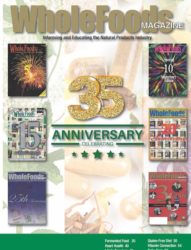Good advertising is a necessary part of a successful business, but don’t think that advertising only entails out-of-store promotions. In-house signage is just as important for rapid turnover, and you should strive for high-quality, informative signs inside your store as they are one of the important measures that persuade consumers to purchase any given item.
The first thing to remember is that signs should be a pleasure to view. Signs are essentially decorations, albeit informative ones. Just like annoying, tacky commercials, an annoying, tacky sign will bring down your company image and make consumers tune out. Stick with simple color schemes (two or three colors, maximum, and be sure to be consistent throughout the store) and use colors that complement each other. Melanie McIntosh, retail consultant and owner of Inspire Retail Solutions, recommends using strong contrasts like white/black, yellow/black, red/white and white/blue.
Also, putting too much information on a sign is a surefire way for consumers to gloss over it entirely. “One main image, a headline and a few bullet points are all you need for an informational sign,” says McIntosh. “A sign in a store window should be even simpler. You need to get your message across immediately as the consumer walks or drives by.” She adds, however, “the more time a consumer will be spending looking at the sign, the more information you can include. For example, a sign near your cash register can provide details of a contest or return policy.”
Placement is key. You’ll want to check for unsightly reflections through windows that could spell disaster for your sign’s visibility. After you place a sign, always go out and see how it looks from the consumer’s point of view. Ask yourself, does this sign appeal to the store’s aesthetic? Is it informative? Does it attract my attention?
Remember, your signs are an extension of your store. Always be professional—ideally, signs should be typo-free and presented on quality foam core or some equivalent.
Published in WholeFoods Magazine, May 2009










